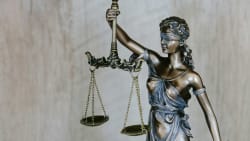Acura Grand Prix of Long Beach Part Three
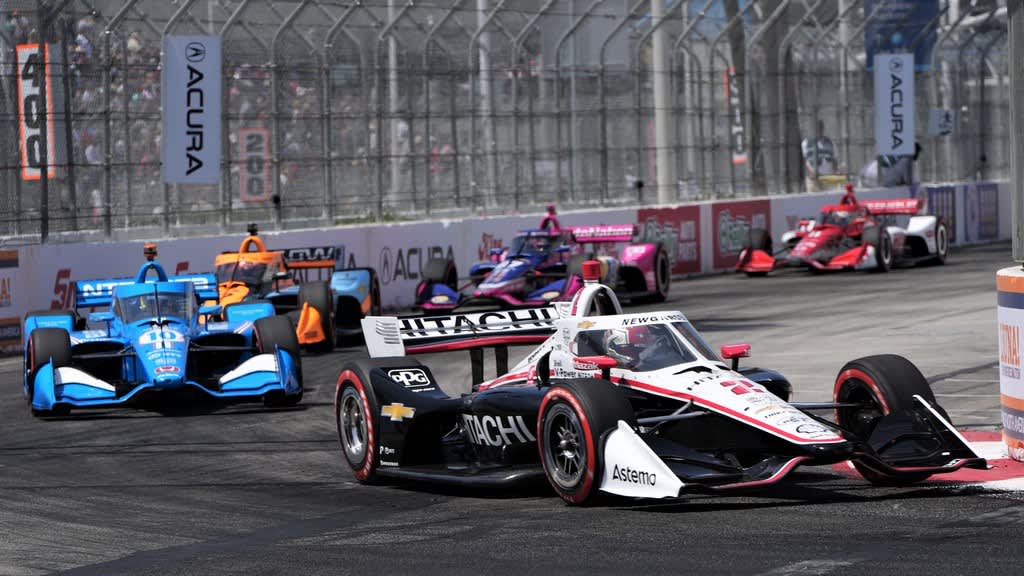
Racers To The End
The full report from Sunday's races at the 2022 Acura Grand Prix of Long Beach.
By Brian Kennedy
Sun, Apr 10, 2022 09:46 PM PST
Featured Image: Eventual winner Josef Newgarden (photo by Albert J Wong)
Long Beach, CA—A large crowd of 26 cars contested the Acura Grand Prix of Long Beach on Sunday afternoon after a 12:45pm local start time, and a large crowd of keen race fans watched.
The race has been run since 1975 on the streets of Long Beach, with the exception of 2020, when it was cancelled for pandemic reasons. It is typically run in April, though last year it was pushed back to September and served as the season finale in the NTT IndyCar series. Colton Herta won that race, and Alex Palou secured the championship.
Sunday dawned cooler than Saturday, when Herta had taken this year’s pole in track record time. In fact, it was downright chilly early Sunday morning as the day’s activities began, though more like fair and mild by the start of the race.
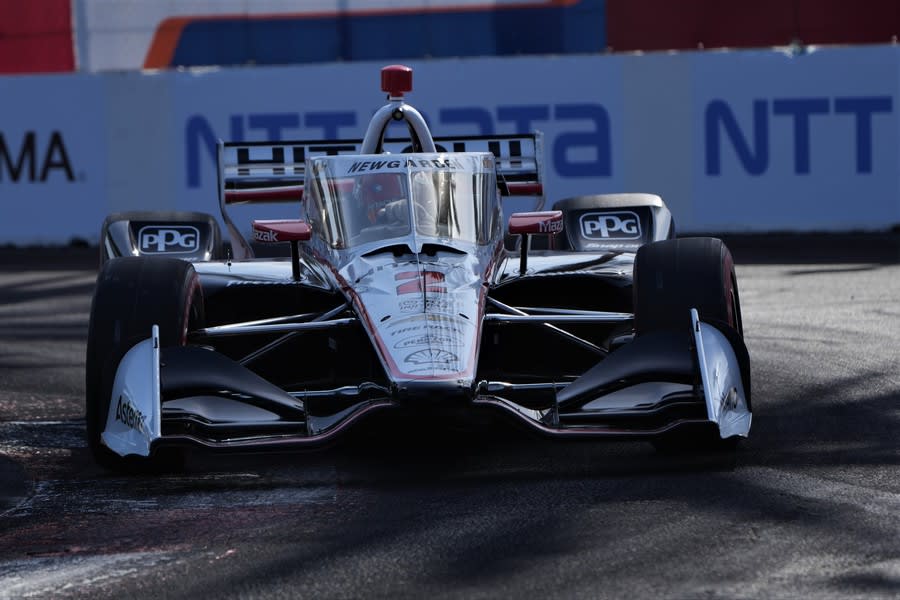
The IndyCars did not begin the action on the day, nor were they the solo attraction of the weekend. Sunday morning saw the HMSA historic GTP cars run a twenty-minute “race” (more like a speedy exhibition, though I did notice one pass coming along the front straight). These cars, mostly produced during the 1980s, were the predecessors of the Daytona prototype vehicles which now run in IMSA and had run on Saturday in a 100-minute event. (See the Saturday story in LACar.com for further information on that if you’re keen.)
The historic GTP cars make more horsepower than the brand-new IMSA cars they are predecessors of, though obviously they were being driven carefully due to their historical provenance. This was the 18th time that the HMSA has stood in support of the Long Beach Grand Prix weekend. Different classes of cars come each year.
Finishing the event Sunday was the car I reported on yesterday, Zak Brown’s 1989 Jaguar XJR10. Saturday, Brown had noticed a mechanical problem as the race was starting and pulled into the pits and shut things down. Sunday, all was well, and as reported by the HMSA spokesperson after the race, people all weekend were asking, “Is that actually Zac Brown driving that car?” When the “yes” answer came, the next question was always, “Isn’t he in Australia” (with the McLaren F1 team, of which he is the executive head)?
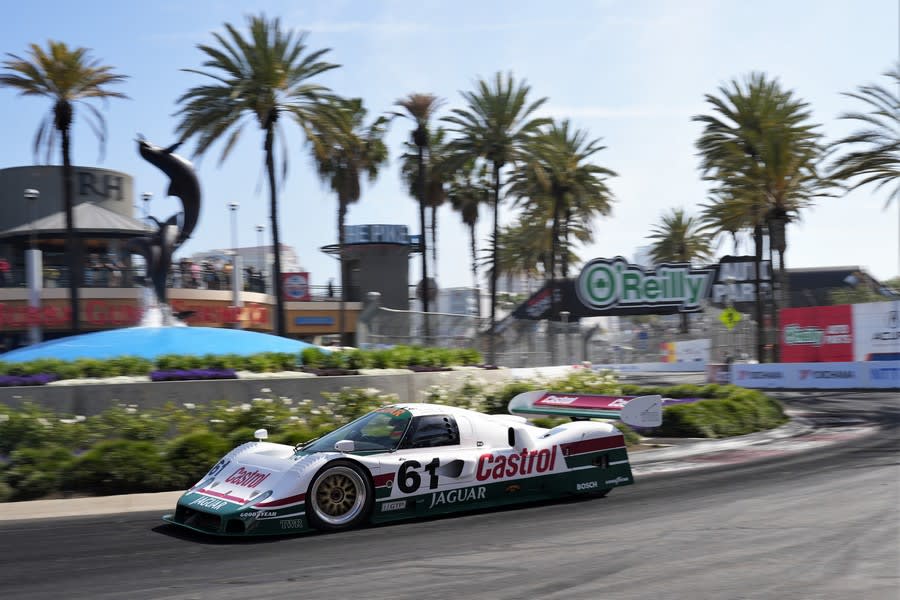
He himself explained his motivation after the event: “I love being here. Long Beach is my home race. It was my first race [as a fan]. I still have the program from 1981.”
The ultimate purpose of the weekend for these cars, aside from exercising the machinery more or less at speed, and enjoyment on the part of the drivers, was explained by Patrick Long: “I’ve had a lot of youngsters come up to me in the Expo this weekend, and they want to know about the history and heritage of IMSA GTP, and that’s what this is all about. We want to race and perform fast laps, but we also want to infect the next generation. This is an amazing storytelling opportunity for us.”
That done, the big show was setting up to start. That’s right—IndyCar, 26 entrants including six rookies. Colton Herta was to start from the pole, as mentioned, and he and the first eight drivers (and 11 of the first 12) were to be using the Firestone alternate tire at the green flag. Further back in the pack, Jimmie Johnson was using the primary tire. Strategy? You need it if you’re starting 25th of 26 cars, it would seem.
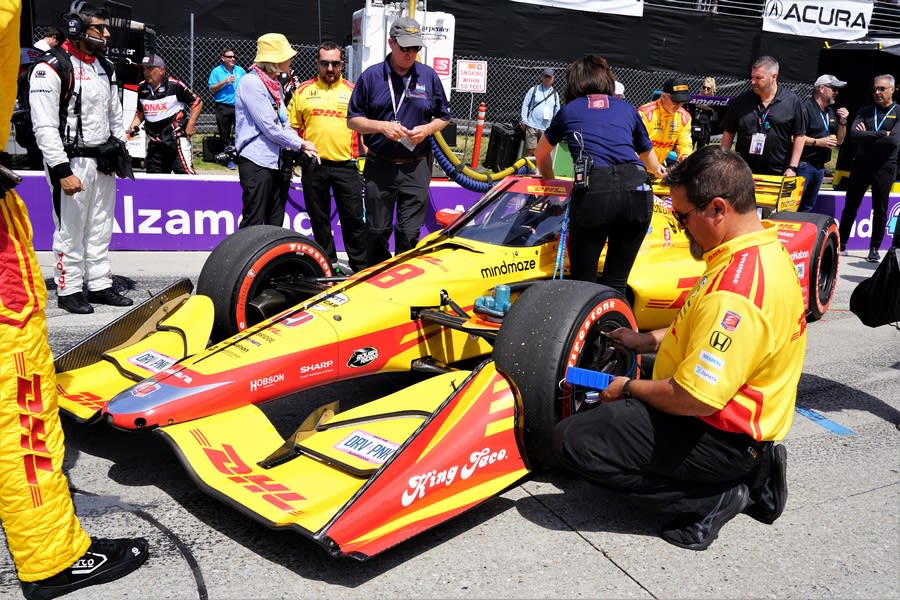
The crowd was warmed up by a tribute to former co-owner of the Acura Gran Prix of Long Beach, Kevin Kalkhoven, also an IndyCar team owner and 2013 Indy 500 team winning owner. Kalkhoven died in January.
The drivers were then introduced, and pretty soon, it was go time. The race played out roughly in three phases over its 85-lap length. The first third had pole sitter Colton Herta comfortably in front. The middle third saw Alex Palou leading. And the final third, including the only lap they pay money for, the last one, had Josef Newgarden leading for the win. This makes two wins in a row, since he took the last race, at Texas.
Here’s the race in glorious narrative detail
There was an early yellow for Dalton Kellett, who hit the wall from well back in the pack. Kellett races for AJ Foyt. Jimmie Johnson pitted early for fuel, hoping to stretch his fuel window later. That didn’t work out, as many laps after, he spun and hit the wall in turn 8 with the rear end, then whipped around and smacked the front side also.
After the restart, the leaders were running about two seconds off Herta’s pole time, putting down 107.6 second laps. What followed was a long green-flag run with no particular action. Any battle there was was for fourth with Felix Rosenqvist holding off Alexander Rossi and then Marcus Ericsson and Romain Grosjean. Grosjean would eventually contest for the race win as he chased Newgarden to the checkered flag with Palou in third.
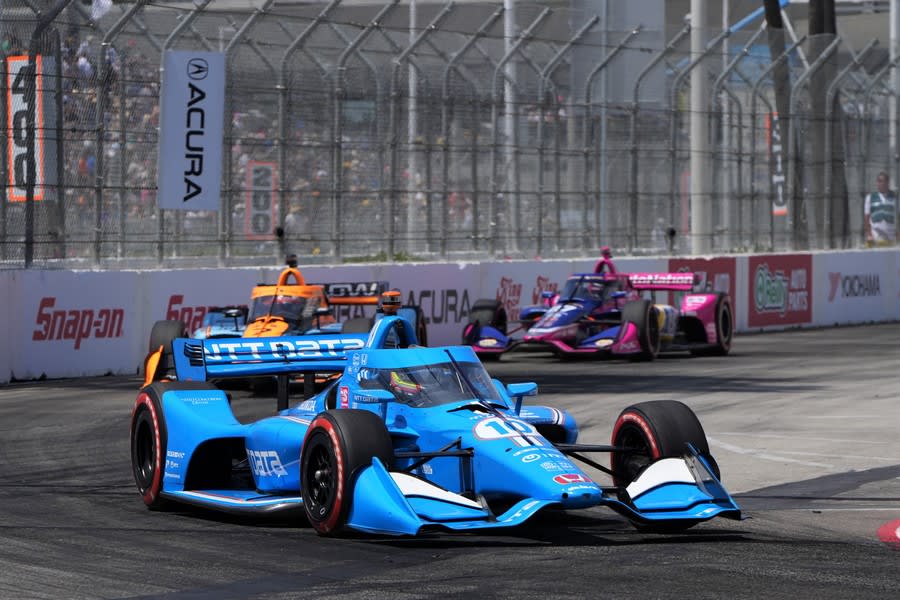
At lap 22, Rossi got past Rosenqvist, who lost three spots. Behind them, Scott Dixon pitted from position 15. He would come home sixth by the end.
On lap 25, Rosenqvist pitted, and on 26, Ericsson passed Rossi for fourth, and then on 27, Grosjean took Rossi.
Lap 28, Rossi pitted with Will Power pressuring him for fifth place. Power later took fourth on the day. Ahead of them, Herta and Newgarden were out front, stretching the fuel by delaying their first pit stops. Herta pitted on lap 29, and Newgarden inherited the lead, which he gave up on lap 30 in the pits, to Will Power. He led two laps, 30 and 31.
On lap 33, Palou led with Newgarden and Herta chasing, then Ericsson and Dixon came up fourth and fifth. The leaders were still running in the 107.7 range. Graham Rahal, whose day would end rather well in seventh place, was in tenth. Ten laps later, on 46, Grosjean was pushing Scott Dixon for fifth place.
On lap 50 of 85, Herta was chasing Newgarden for second place. Palou was ahead of them by 2.7 seconds in first place. Ericsson was fourth, with Grosjean fifth. Palou pitted on 55, and meanwhile Newgarden led with Herta in second. Ericsson was third, then Grosjean and Palou.
And then Herta blew it. He hit the wall in turn nine on lap 55, with no help from anyone else. His lap leader total was 28, from 1-28. (Eventually, Palou would lead 22 laps, and Newgarden 32. Will Power led two and Devlin DeFrancesco a single lap on pit exchange.) So that was it for Herta, who recorded a 23-place finish.

On lap 57, Newgarden pitted, the race still green. He came out of the pits barely ahead of Palou. Palou tried to go outside to pass in turn six, and again in turn nine. The top five with 58 laps gone were Newgarden, Palou, Ericsson, Grosjean, and Power.
On lap 59, Pagenaud spun, then inexplicably drove into the flowers surrounding the fountain turn. He spun his tires but couldn’t move and so eventually brought out a yellow. It took a long while for the course martials to get him out, then yet longer to get him turned around. His day would end four laps down in 19th place. Jimmie Johnson was at this point 18th. His day ended in the wall, as noted earlier. He was scored in twentieth at the end.
The race restarted on lap 66, with Newgarden, Palou, Ericsson, Grosjean, and Power still the top five. A lap later, Ericsson hit the wall from position three. He went on, but got in Scott Dixon’s way as Dixon was coming up behind. On the next lap, Grosjean was pressing Palou for second into turn 1 on lap 68, and the top three cars, which were the same until the end (Newgarden, Palou, Grosjean) were pulling away from the pack.
Grosjean took second going into turn one on lap 69, and set his sights on Newgarden. He tried to pass twice in a row on turns eight and nine. Newgarden slipped and got loose on the rumble strips after the hairpin turn coming back onto the front straight. Grosjean couldn’t get to him, in part because the French driver was using red (alternate) tires, and they don’t wear as well as the primary (black) tires that Newgarden had on his car by this point.
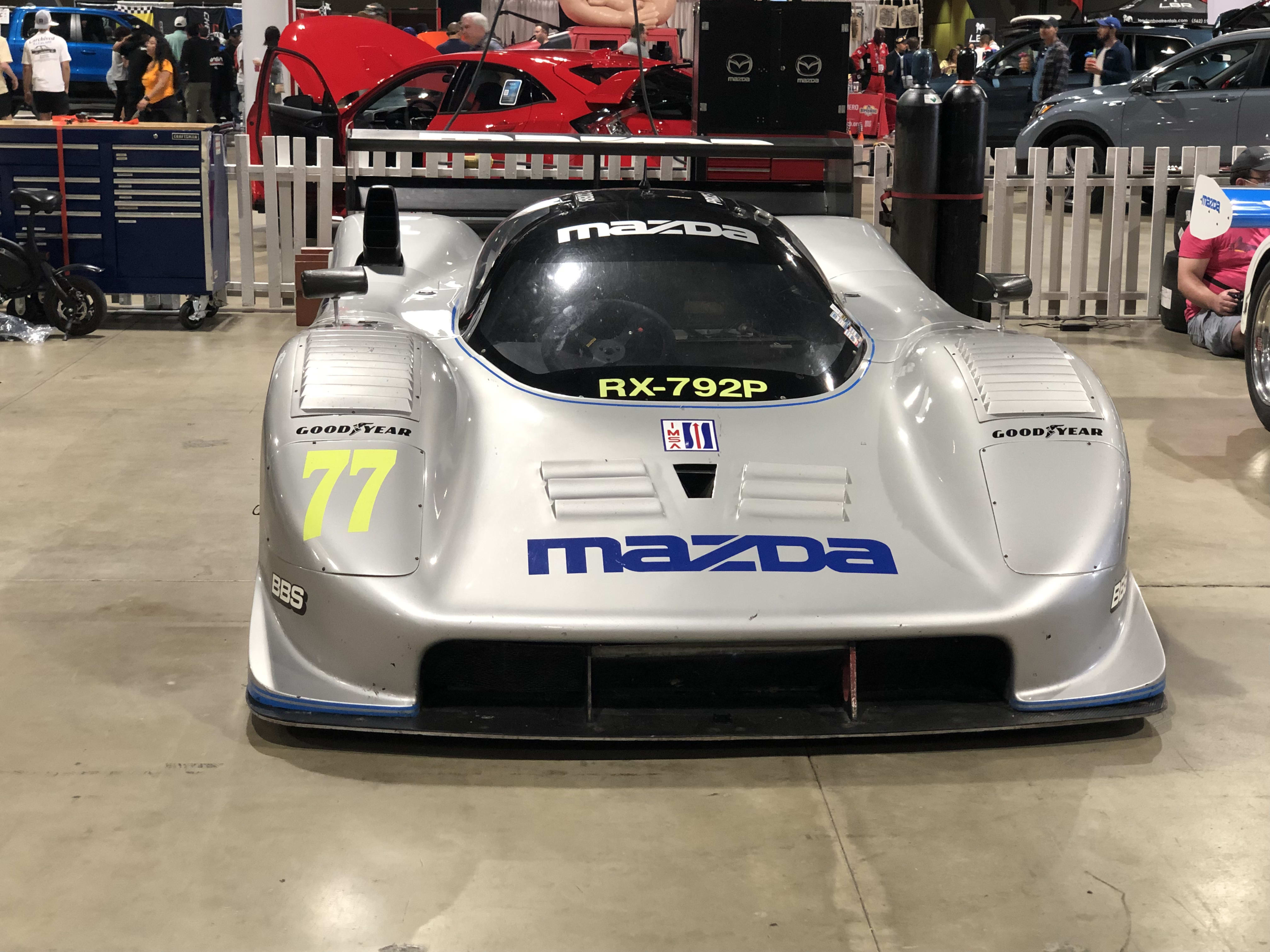
He would later explain: “There’s so much rubber on the track, I really thought that tire life on the reds would be impressive, and it was the opposite. Romain actually did a really aggressive strategy there at the end, to go to used [reds]. There’s more opportunity to let the tires survive at the end because there’s more rubber down, but that first stint was really difficult . . . even new reds were really difficult to make last, so that was a surprise to me. I thought they would hang in a little better, but that definitely dissuaded us from going to those at the end.”
The chase for the lead came to a halt on lap 75, when Johnson brought out the caution by backing his car into the tires (as described above) on turn 8, that famous trouble spot that grabbed more than one driver during the race.
Newgarden explained the turn eight mess after: “The course was getting difficult because there was so much rubber on the track, it was almost compiling, on top of each other. It was starting to peel up, and spread out across the track. You would slide slightly offline and get big chunks of rubber. It was like the surface got really grainy, it wasn’t smooth where you had a nice, consistent profile. It was just filled with these chunks of rubber. I think that was what you were probably seeing. If you got offline . . . not easy . . . . That’s what made it difficult at the end, compiled too much of it.”
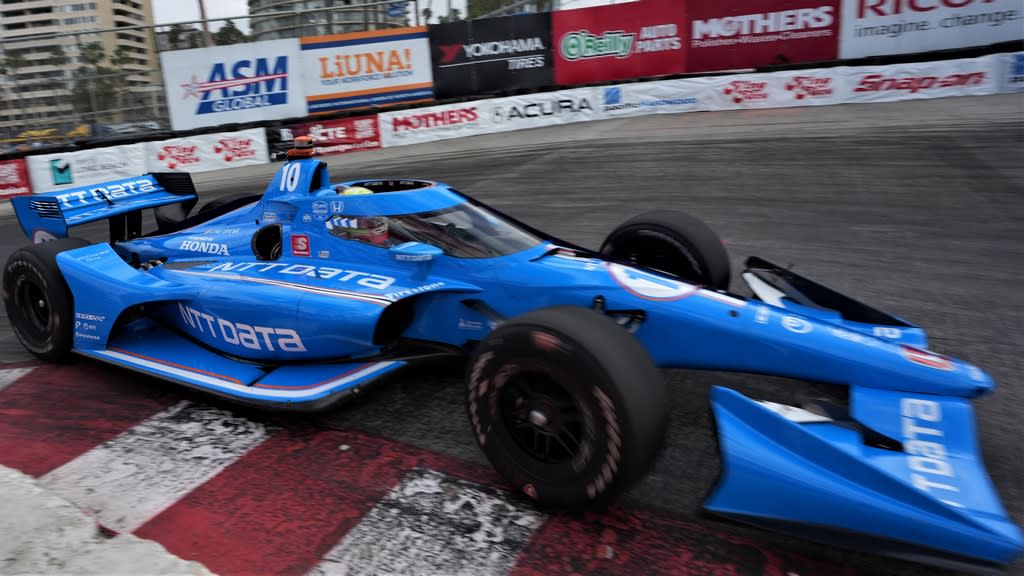
The race went green with five laps remaining. Grosjean tried a pass on the outside into turn one. Newgarden held him off. The race was going to end at speed that way, but for a yellow on lap 85 caused by another turn eight mishap, when Sato hit the wall. The race ended under yellow.
Newgarden said of the lap 80 restart, “I think he [Grosjean] used his tires up too much leading into the last yellow…. His tires just were not as good as the first restart [lap 66].”
Newgarden took his 22nd career win, but his first at Long Beach. Naturally, he was ecstatic about it afterwards. “I’ve never had a victory here, and it’s just really, really special for me to get one.” He added, “Incredibly special. This place is a hard nut to crack. It just, it’s a lot of pressure, like the Indy 500. Everyone looks at this place as a crown jewel of our sport, and it would be an honor to win here; you feel it within the team. It’s huge to be able to win in this place. It does mean more than in some other tracks.”
Grosjean was second, 1.28 seconds back, and Palou was third, another half second behind. Will Power came fourth, with Pato O’Ward fifth. Scott Dixon, Graham Rahal, Rossi, Helio Castroneves, and rookie Kyle Kirkwood finished out the top ten. The next closest rookie was Tatiana Calderon, in 16th.
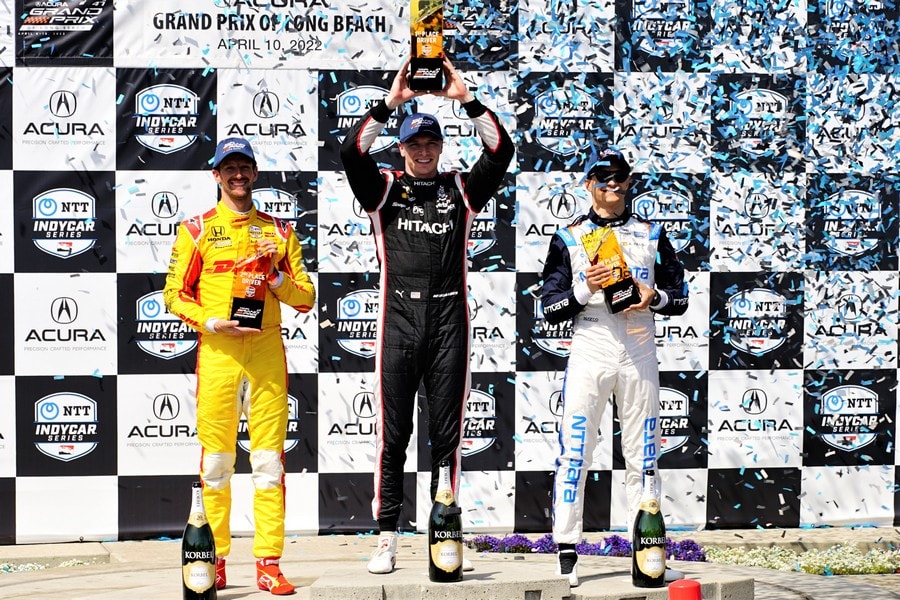
There were 85 total laps, of which 72 were contested under green flag conditions. The fastest lap was set by Palou at 105.372mph (67.2359 seconds). The race was quick—an hour, 46 minutes.
And then the weekend ended with another Super Truck race and another Porsche Carrera Cup contest. I wandered out to the grandstands to see what was up during that final event, and I was surprised to see that the seats were still very much full. There was a long yellow period happening as I watched, and as the pace car came by, lights out to signal that things were about to go green again, the Long Beach crowd, racers to the end, roared.
About The Author

Brian Kennedy always wanted a ’66 Mustang. 10 years ago, he bought one – and he’s been restoring it ever since. Brian extended his passion for cars by covering events for magazines like Grassroots Motorsports, Sportscar, and Victory Lane – e.g., events in Cart, Pro Rally, Formula Atlantic, the SCCA Runoffs, Trans Am, SVRA, VSCDA, and VARA. He’s also profiled a number of cars and interviewed a number of personalities – among them: Gene Felton (IMSA), Hurley Haywood, Jerry Seinfeld, and Nigel Olsson.
